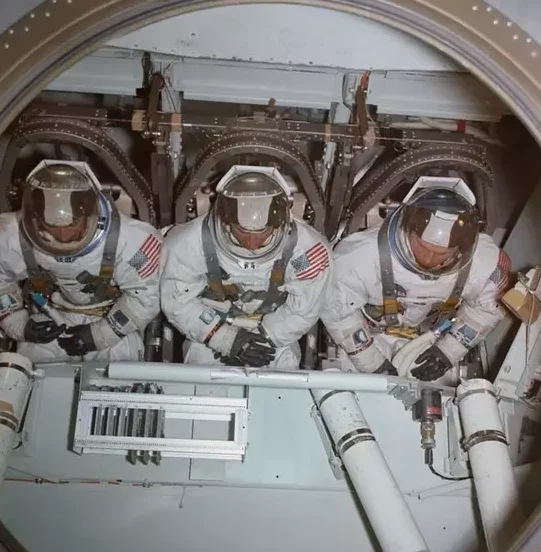There is limited knowledge among the general population about the effects of different levels of G-force, such as 1G, 2G, 5G, 8G, and 10G, unless they are involved in civil or military aviation. It is commonly understood that passengers on a commercial aircraft experience inertial forces equivalent to approximately 1.5 G during takeoff.
As the aircraft accelerates, the bodies of the passengers inside experience this acceleration caused by an external force, such as the engine. The human body reacts to this force in various ways, including a slight darkening of vision, mild dizziness, or even headaches.
Not many individuals consider the essence of this phenomenon, as well as the fundamental principles of how existing aircraft operate. In reality, this subject is quite fascinating, and not just for aviation enthusiasts, but also for the average person, because similar forces are encountered by every city dweller on a daily basis: when riding a train, stepping into an elevator, or even when sitting in the passenger seat of a car that suddenly changes speed.
Basic details
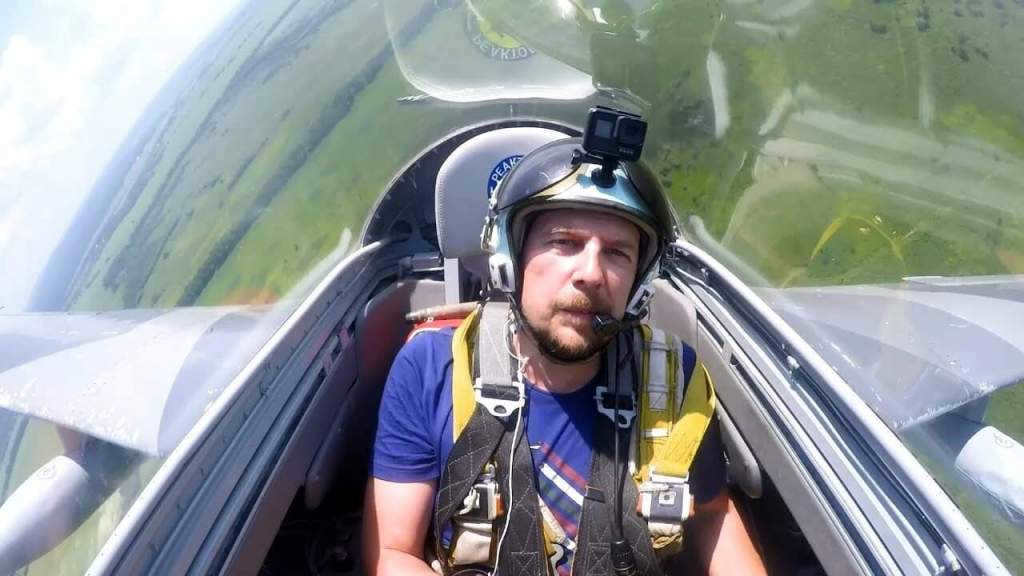
Explaining what G-force is for an individual entails delving into the realm of contemporary physics. The concept itself is rather abstract, referring to the ratio of the linear acceleration caused by non-gravitational forces to the standard inertia experienced during free fall. Comprehending such a definition can be challenging, so it is advisable to review the knowledge acquired during our school years. Let us recall the following formula:
G-force (G) = Acceleration applied to the body by non-gravitational forces / Standard acceleration due to gravity (9.8 m/s²)
The resulting value is abstract – we express the ratio of meters to “square” seconds and then observe the outcome in units. However, experts have introduced the symbol G, which is now commonly used to represent the “acceleration ratio”.
For instance, if an individual goes from a sitting position to standing on their feet, they will not feel any sensation. However, in reality, it can be said that their body is experiencing a force equivalent to 1 G. If the environment around them suddenly shifts, let’s say 300-400 meters to the right, the inertial force that creates the pressure will change proportionally to the speed at which the building shifts.
How much are the overloads of 1G, 7G, 10G, or 12G?
There is a wide range of forces that act upon objects on Earth, including gravity, inertia, pressure, elasticity, and friction. It is commonly understood that objects with non-zero weight will always experience some level of attraction. The same forces apply to humans as well.
However, when it comes to the acceleration of two bodies, various external factors often interfere with this scheme. These factors can be:
- Short-term. For example, when a bus suddenly brakes, the driver and passengers are thrust forward, experiencing overloads.
- Prolonged. Pilots experience overloads when performing aerobatics in airplanes.
- Positive. Overloads can occur in an elevator or during rapid acceleration on a powerful motorcycle.
- Negative. Easily noticed on trains, when the driver abruptly releases the brakes, as if turning off a valve.
- Zero. Seen exclusively in space – no external forces act on the body, allowing it to float freely in weightlessness.
All the concepts related to inertial effects are in some way connected to civil and military aviation, as well as astronautics. It is in these fields that the effect of changing the acceleration vector reaches its peak and becomes most noticeable. Even the training of future astronauts involves the use of aerotubes and powerful centrifuges, which prepare the human body for the stresses it will experience, such as during rocket launches.
1 G
To comprehend the concept of maximum permissible overload and determine the amount of G-force a person can endure, it is essential to grasp the notion of inertia. Every object situated on the Earth’s surface experiences a gravitational force due to the acceleration of free fall, which is approximately 9.8 m/s², and the human body is well-adapted to withstand this force.
Since this specified value possesses a vectorial nature, the direction of its impact is significant for any object. When we move in a straight path or remain motionless, the internal organs of our body maintain their original state. However, if an external non-gravitational force is introduced, the internal organs will strive to remain in their initial position, resisting any displacement.
2 Gigabytes
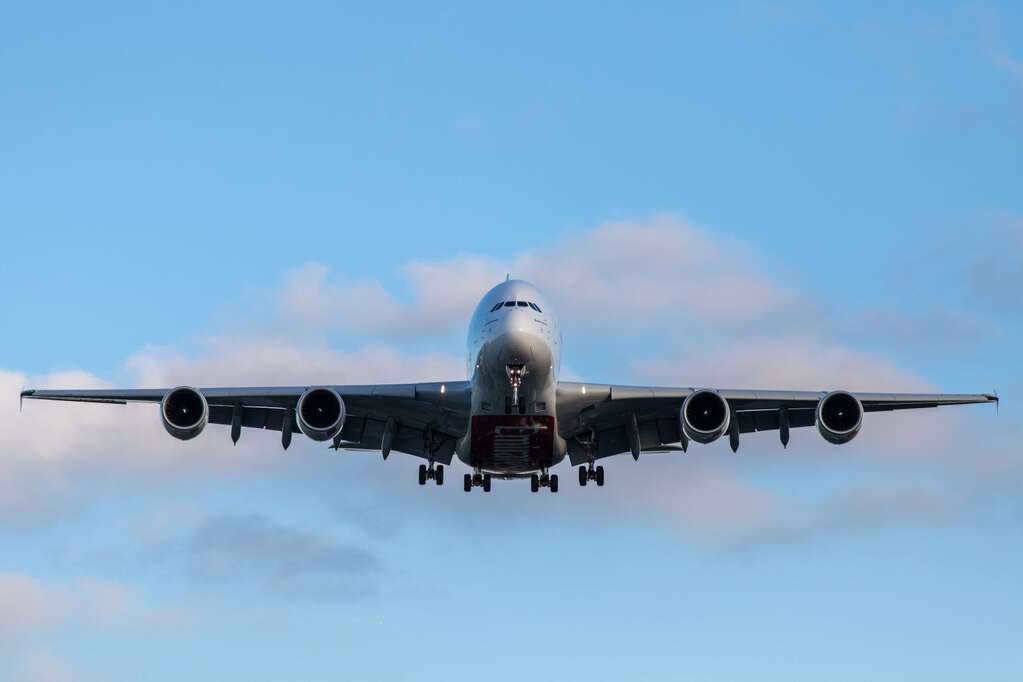
It is commonly believed that passengers on commercial airplanes experience loads ranging from 1.5 to 2.5 G. These figures are standardized to ensure that airlines use aircraft with sufficient overload protection. Similarly, skydivers hanging under the parachute at high altitudes face similar conditions. In this case, the overload vector is around 1.8-1.9 G (with an opening force of 10 to 16 G, depending on the parachute design).
The issue lies in the fact that these particular forces have a profoundly detrimental impact on one’s well-being. An individual can endure pressure up to 15 times the norm, but only for a maximum of 3-5 seconds before losing consciousness. When excessive pressure is exerted, it results in the blood flowing out of the head, leading to oxygen deprivation in the brain. The extent of the damage to one’s health is contingent upon the unique characteristics of their body. Those who are less prepared to handle such effects will experience more severe consequences.
5G Technology: Revolutionizing Connectivity
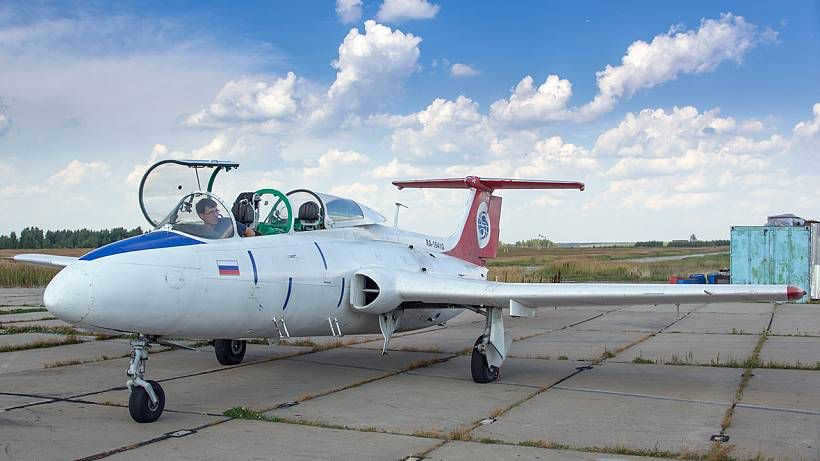
Only skilled aviators of different military and athletic aircraft, who execute intricate aerial stunts, confront a magnitude of sevenfold overloads.
During the landing of an aircraft, the engine strives to counteract free-fall. The jet propulsion system steers the aircraft in the opposite direction of descent. Consequently, the disparity in acceleration arises, resulting in some detrimental effects on the pilot’s well-being.
Nowadays, anyone has the opportunity to feel the impact factors of 7G by taking a flight several thousand meters above ground level. The renowned company “Poletomania” provides the option to purchase a certificate for a journey on board the magnificent vessel named “Dolphin” – the Czechoslovakian L-29, capable of reaching speeds up to 700 km/h, guaranteeing passengers an extraordinary experience filled with thrilling sensations and overwhelming emotions. The duration of this exhilarating adventure varies between 20-30 minutes, depending on the specific program selected by the customer.
Overloaded with 8G
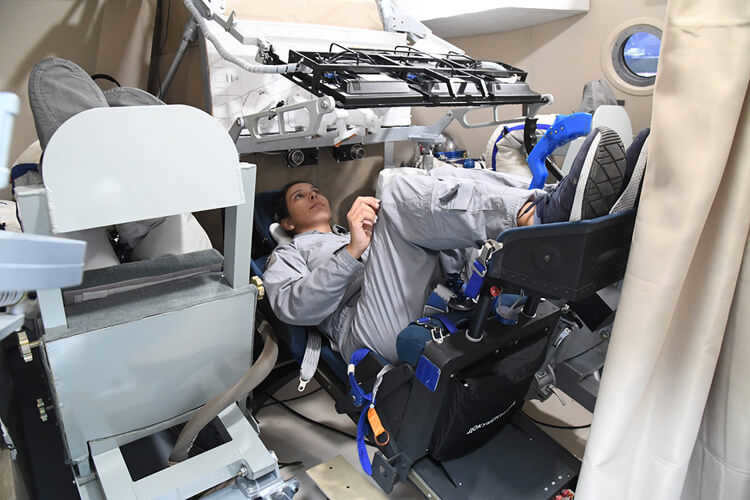
In the early days of aircraft construction, extensive research was conducted, revealing that the physiological limits for humans under acceleration are typically around 8G to 10G, assuming long-term exposure. In simpler terms, humans cannot withstand these levels of acceleration for extended periods of time, as it causes blood to drain from the head and the brain to experience oxygen deprivation, resulting in complete incapacitation. However, with appropriate training and specialized anti-overload suits, similar to those used by modern astronauts, the impact of these forces can be minimized.
It is commonly believed that when skydivers deploy their parachutes, they experience a force of approximately 15G, which causes the parachute to momentarily hang in the air. This effect lasts only a few milliseconds and does not have any significant consequences.
Overload of 10 G
An overload of 10 times the normal gravitational acceleration of free fall (9.8 m/s²) is a clear demonstration of the limits of the human body’s physiological abilities. When subjected to this level of overload for more than 2-3 seconds, individuals may experience:
- Minor functional shifts.
- Impaired coordination in space.
- A sensation of heaviness, as if a stone slab were placed on them.
- Gradual loss of vision.
- Experiencing effects from disorders of the cardiovascular and respiratory systems.
The entire body, including the CNS, is subjected to harmful effects, resulting in morphological changes in tissues. However, the extent of training plays a crucial role. A skilled pilot or astronaut can endure a 10-fold pressure with relative ease, especially when wearing a specialized high-altitude compensating suit with a sealed helmet.
12 gigabytes
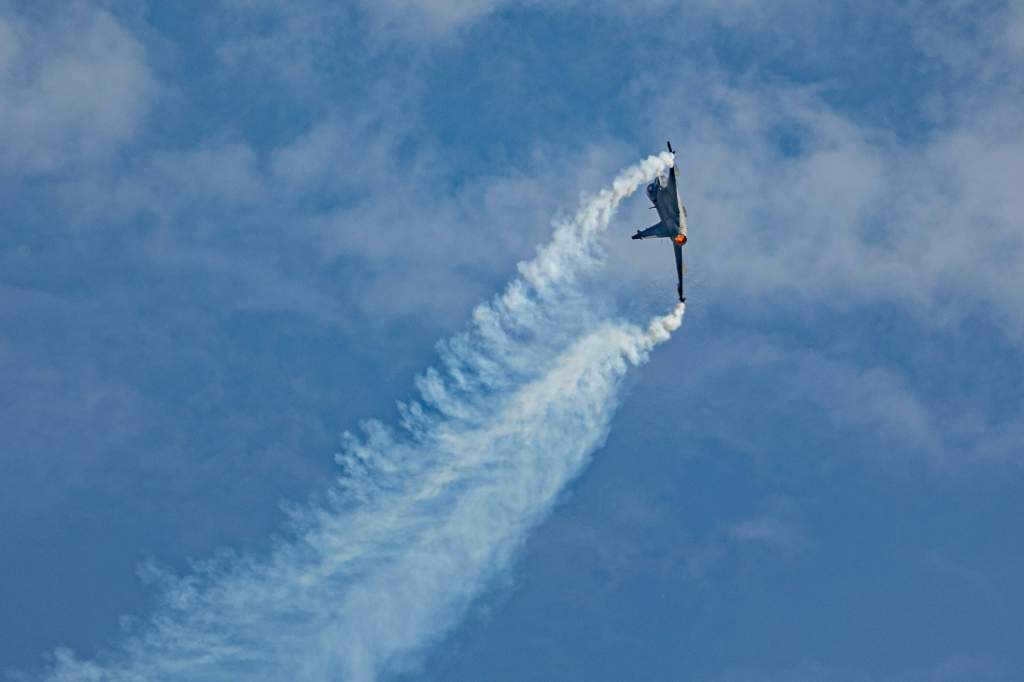
The subject of overload in aviation and the maximum value that a person can endure is primarily of practical interest. These questions tend to be relevant to individuals involved in military or civilian flights and space exploration. As a result, the effects of 12-fold loads are only studied through practical experiments and tests conducted by researchers.
It is within this context that the upper limit of physiological capabilities is determined. While individuals may be able to adapt to smaller overload levels, withstanding a 12G force for an extended period of time is unlikely. However, the long-term effects of such forces on the human body are typically not a concern.
Astronauts, pilots, and racing car drivers all experience significant stresses, but these stresses are typically short-lived, lasting only one and a half to two seconds. Furthermore, pilots are equipped with anti-overload and altitude-compensating suits to enhance their personal abilities.
Maximum G-forces experienced during takeoff and landing of a commercial aircraft
Many passengers who fly with modern airlines have observed that some landings are incredibly smooth, while others are quite rough, with a strong jolt upon touchdown. It may appear that the pilot’s skill is the sole factor contributing to this difference. However, in reality, the design of the aircraft itself also plays a significant role alongside the pilot’s skill.
It is fascinating that Soviet and Russian planes like the TU-134 and IL-86 have a much gentler landing compared to their foreign counterparts. It’s almost like they are gracefully gliding onto the runway – initially moving parallel to the line and gradually descending to touch down. Foreign airliners tend to have a rougher landing, but modern aviation has set standards that all airlines must adhere to.
For instance, the maximum load experienced by passengers during landing should not exceed 2.5 G. Going over this limit would result in a hard landing, which is not only detrimental to passenger comfort but also to the aircraft itself. It would require maintenance or even an overhaul after such a landing.
What is the maximum capacity for a person to endure overload?
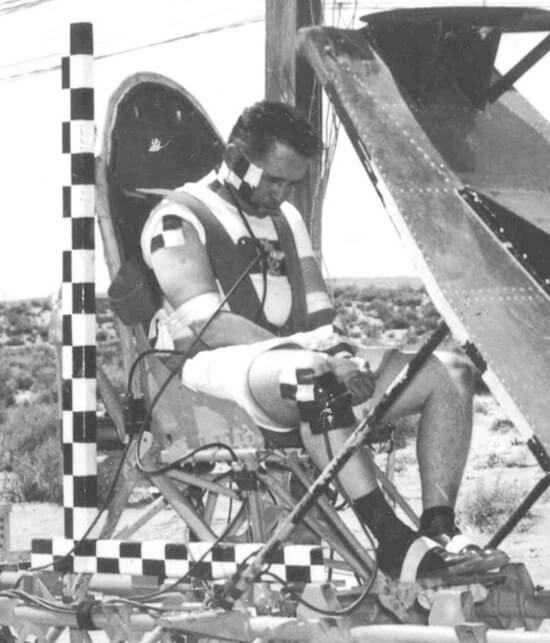
There are actually a multitude of records concerning the maximum overloads experienced by astronauts during takeoff, whether they be short-term or long-term:
- The emergency descent of the renowned Soyuz-class spacecraft resulted in an overload of around 25 G’s.
- John Paul Stapp voluntarily subjected himself to testing in a specialized simulated centrifuge, reaching up to 46.2 G’s.
- Kenny Brack experienced the highest short-term pressure overload of 214 G’s during a crash at the last race of the season in Fort Worth.
- The Shuttle Challenger crash, which claimed the lives of all 7 passengers on board, resulted in an overload of 250 G’s.
According to experts’ calculations, the interplanetary station “Venera-7” encountered an inertial force of approximately 350 G while decelerating within the atmospheric layers of Venus.
This article explores the units of measurement for G-overload in aviation, astronautics, sport airplane pilots, and military fighter pilots. Despite the existing research on this subject, further investigation is still needed.
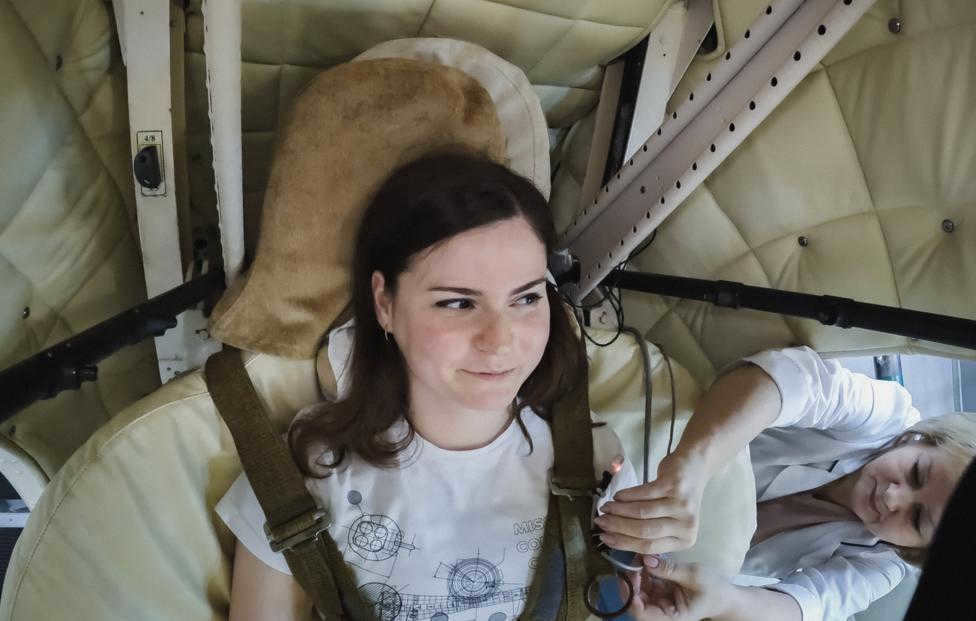
11 individuals recently participated in a two-day program at the Yu. YU. Gagarin Cosmonaut Training Center (CTC) known as “Pilot Squad of Space Explorers (POISK)”. During this time, they had the opportunity to experience the daily routines of cosmonauts, engage in various training exercises such as centrifuge tests, undergo psychological evaluations to assess their endurance, and interact with knowledgeable specialists and instructors.
Anyone who has a desire can join the CPC, so journalist Ekaterina Moskvich from the United Military Editorial Office of TASS had the opportunity to experience the life of a cosmonaut for the first time together with the SEARCH team.
Individuals with such qualifications are recognized as astronauts
At dawn, our team assembled at the entrance of Star City, where the Cosmonaut Preparation Center (CPC) is situated. Due to its status as a restricted administrative zone, gaining access to this area can be challenging. After our documents were thoroughly reviewed, we embarked on our journey towards the Cosmonaut Training Center. The perimeter fence and surrounding woodland of Star City served as a barrier isolating us from the outside world, allowing us to fully immerse ourselves in the theoretical and practical aspects of our training.
The process of becoming acquainted with the astronaut’s occupation commenced by engaging in discussions with psychologists Zhanna Shevchenko and Natalia Filippova. Amidst the selection process for potential squadron members, approximately half of the applicants were typically eliminated. “We exclude around 45-50% each time, although it does not imply that individuals are inadequate, but rather that their personality traits do not align with the desired astronaut’s profile,” stated the expert.
A unique mini-test was made ready for our group. We were awarded a specific number of points for each task completed, and the total score determined our initial “professional fitness”. The first task that all participants attempted was the Romberg position: with closed eyes, they had to balance on one leg while stretching their arms out to the sides for as much time as possible without losing balance. I found this exercise to be effortless as I was able to maintain the pose for over a minute before the psychologists intervened. Upon opening my eyes, I was astonished to discover that not everyone had accomplished the same feat.
To assess motivation, psychologists proposed that we jot down several skills we could teach in a minute; then we responded to inquiries about astronautics. One of the intriguing tasks involved selecting a rocket with various shapes on its hull (ranging from a circle to a zigzag). Subsequently, we had ample time to discern that each shape reflects a distinct personality (most of us in the group were inclined towards creativity – hence, a majority chose the zigzag). Our astonishment was palpable when we discovered that all these personality types garnered the highest score – space demands diversity.
Finally, a stress test was administered: we were tasked with counting a minute with our eyes shut. Personally, I didn’t succeed – my inner minute seemed to stretch too far. However, I, along with the rest of the group members, successfully passed the mini-test. It turns out that all of us are “apt to be astronauts.”
I believe that in real life, not all of us would have had the opportunity to compete for a position in the team, as there is a general selection process that needs to be passed first. This selection process involves sorting individuals based on their professions. According to Zhanna Shevchenko, “Engineering, natural science, medical and biological specialties, as well as flying, are currently considered as the entrance ticket for future selections. Perhaps, IT-specialties will also be included in the pool of selected individuals.”
Considering my background in humanities, I highly doubt that I would have been able to communicate with psychologists or make it very far in the selection process.
The signs are promising, let’s proceed
One of the most anticipated experiences for the entire group was visiting the CF-7 small centrifuge hall, which has a radius of seven meters. Not only could we observe it, but we also had the opportunity to rotate it. However, initially, only five out of eleven individuals were courageous enough to try it.
Prior to entering the hall, everyone had to undergo a medical examination in order to obtain a certification of approval. It was at this stage that the excitement or lack of sleep began to affect us: two individuals had high blood pressure. Looking ahead, it is worth mentioning that one of them was not granted access due to their blood pressure not returning to normal – health takes precedence over a strength test.
"Right in front of you is Nikolai Chub, the cosmonaut from the Roscosmos squad," said medical officer Irina Konovalova. Standing at the entrance, she reassured us that everything would be fine, and as a result, all our anxiety disappeared. We were trained to breathe with our stomachs and withstand the intense pressure, and sensors were attached to our bodies to monitor our condition throughout the process.
The girls took the first turn on the rotation. I was next in line, and the instructor jokingly referred to me as Catherine the Second. It felt like the first participant’s rotation happened in an instant – the instructors carefully guided me into the centrifuge, instructing me where to look, what to press, and how to behave. Then the doors closed, and the spinning commenced.
"Should we continue with the 3g overload?" – Irina Konovalova’s voice resonated in the midst of the challenge, guiding us like Ariadne’s thread. And in that instant, I nearly erred: neglecting my belly breathing technique, I almost declined to escalate the overload. "Let’s push it to 3.5. If you breathe properly, all will be well, the readings are favorable" – it was then that I recognized my mistake and comprehended the importance of unwavering focus.
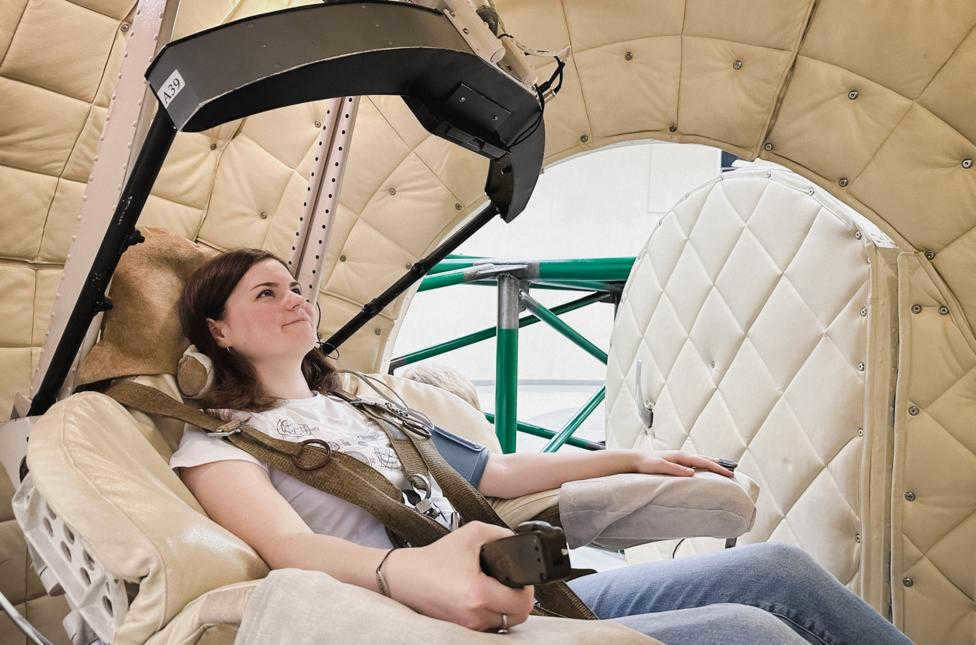
Many individuals are filled with fear when they encounter the centrifuge, as there exists a commonly held belief that it will inevitably lead to motion sickness. However, this is not an accurate representation of the situation. Rather, the centrifuge serves as a means to replicate the gravitational forces encountered by astronauts during takeoff and landing. As the body becomes burdened with additional weight, individuals find themselves pressed into their seats, making it increasingly difficult to lift their arms as the levels of force increase.
Astronauts encounter 3.5g forces during the launch of a rocket. When I became aware of this, a smile spread across my face and a wave of happiness washed over me, because in that very moment, I entered my own personal realm of space. Gradually, the forces began to diminish. After the centrifuge came to a complete stop, I experienced a slight sense of disorientation, and upon exiting the centrifuge, a state of pure elation.
Within the larger group, it was effortless to identify those who had taken a spin on the centrifuge. Their eyes sparkled throughout the day – mentally transported back to the sensation of forces, feeling akin to astronauts.
0.4 atmosphere.
After successfully passing the selection stage, it was time to commence our classes and training. Our first activity involved visiting the glove box and attempting to perform basic tasks while wearing an inflated spacesuit, which allowed us to experience the challenges faced by astronauts in outer space.
During this visit, CPC instructor Yuri Baikov informed our group that the pressure inside the spacesuit during extravehicular activities is equivalent to 0.4 atmospheres (approximately 300 mm of mercury). This pressure level allows for the entry of oxygen into the body while preventing excessive inflation of the spacesuit, which could hinder movement.
The task assigned to us in the glove box was relatively simple – twisting bolts. However, it proved to be much more challenging when performed with inflated sleeves. Not only did we have to exert more force, but the gloves of the spacesuit also made our fingers feel thicker, resulting in a loss of fine motor skills.
After becoming acquainted with the operations in outer space, we embarked on a training session on the docking process of the Soyuz transport spacecraft with the International Space Station (ISS). In order to practice and refine these procedures, the CPC (Crewed Spacecraft Division) has developed a simulator that utilizes software and specialized controls to assist in mastering the manual control of the spacecraft. The training exercises highlighted that it is premature for us to venture into space as of yet: while some members of the research team were able to successfully dock with the ISS in simpler scenarios, there was simply insufficient living space available on the virtual station for complex docking scenarios.
You have only 30 seconds
The second day in Star City proved to be just as intense – we had to familiarize ourselves with the experiments being conducted aboard the International Space Station (ISS).
“The previous group referred to me as a magician,” greeted us Dmitry Bondarev, an employee of the CPC, with a cheerful smile. He took us to the classrooms where astronauts train in visual instrumental observation (VIN). It turns out that space explorers have less than a minute to orient themselves to the specific area of Earth that the ISS is flying over, locate the desired object, and capture a photograph of it. At first glance, this task may seem simple. However, once we were allowed into the simulator, we quickly realized that it was anything but.
Certainly, there are no labels above towns, rivers, and oceans, like in Yandex.Maps for example. As a result, we have to identify objects based on geographical landmarks. Clouds often hinder our ability to search for them. Additionally, the field of view is restricted by a small window and the duration of the flight (the object is “moving” so it needs to be tracked). The simulator allows us to simulate any conditions. It is the ability to “manipulate” the clouds and the location on the planet where the virtual ISS is flying that earned Dmitri Bondarev the nickname of a wizard.
The following session for our group was centered around the study of astronomy. Our center, the CPC, has its very own planetarium designed specifically for this purpose. As stated by Yevgeny Cherniak, a staff member at the CPC, this planetarium was created under a unique order from the GDR. “Our goal is to accurately project the stars at an altitude of 400 kilometers (which is close to the orbit of the ISS, approximately 420 kilometers above the Earth – TASS note). This allows us to avoid the interference of Earth’s atmosphere and provides us with the maximum number of visible stars. At the time, the most comprehensive star map for planetariums contained around 12 thousand stars,” explained Evgeny Chernyak.
The primary requirement for the astronomy class was to refrain from using phones in order to minimize unnecessary screen light and fully appreciate the beauty of the stars. It was a unique experience to witness a greater number of stars and the absence of flickering lights, which are typically caused by Earth’s atmosphere.
At the conclusion of the lesson, we grasped the rationale behind the comparison of the Big Dipper constellation to a ladle in Russia, and to a cart in Germany. Additionally, we acquired the skill of identifying various constellations. Furthermore, a staff member from the CPC shared an intriguing tale about Sirius Black, a beloved character from the Harry Potter series. According to their account, the inspiration for Sirius Black’s character stemmed from the Big Dog constellation, which prominently features the star Sirius.
Curd cheese and beet soup
One of the highlights of visiting the CPC is getting to taste the space cuisine. The astronauts primarily consume canned and freeze-dried meals while on the space station. These types of foods are specially designed to have a long shelf life. Once on board, the meals can be heated or rehydrated with water.
It is commonly understood that a gravitational force of 1g is experienced by someone who is standing still or moving in a straight line at a constant speed. However, if the speed or direction of motion changes, the weight and resulting gravitational force on the body also change. The average person can feel these changes when using an elevator or going on a ride at an amusement park. Passengers on a supersonic airliner experience an overload of about 1.5g during takeoff. The main types of overloads are typically categorized as follows:
– Short-term overloads (such as those experienced by drivers and passengers in a car accident)
– The pilot of a sports airplane engaged in sky aerobatics experienced a protracted occurrence.
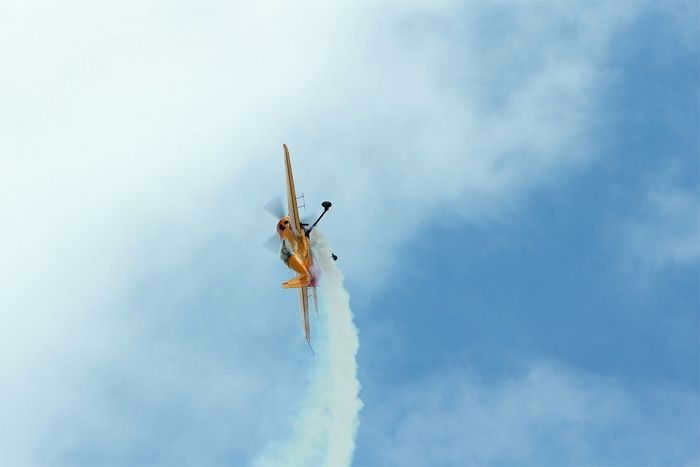
– The sensation of positivity occurs when an individual rapidly ascends in an elevator or when a motorcyclist accelerates on a highway;
– Conversely, the sensation of negativity occurs when an individual brakes abruptly (this is especially noticeable on a train);
– The sensation of zero gravity occurs in space or at the initial stage of a parachute jump.
During positive overloads, blood flows away from the head and rushes towards the legs. This state is generally better tolerated compared to negative overloads. Overloads can occur in any direction (up, down, sideways, diagonally), but always opposite to the direction of acceleration.
Professions linked to excessive workloads
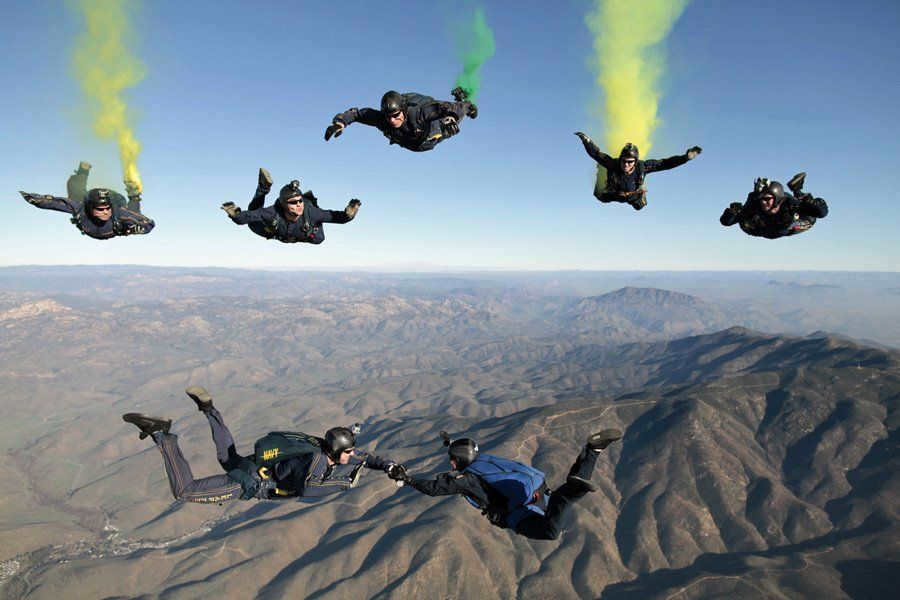
1. Paratroopers experience forces of up to 1.8 g when they land in their full gear, and briefly up to 5 g when their parachutes open. For individuals who are not trained, these forces can result in injuries and fractures. The military undergoes extensive training and testing to prepare for these forces.
2. Astronauts in the descent vehicle endure extended forces of 3-4 “ji”. Not every trained astronaut can handle such forces, only pilots who have successfully completed difficult tests and rigorous selection processes are chosen to be part of the space squadron.
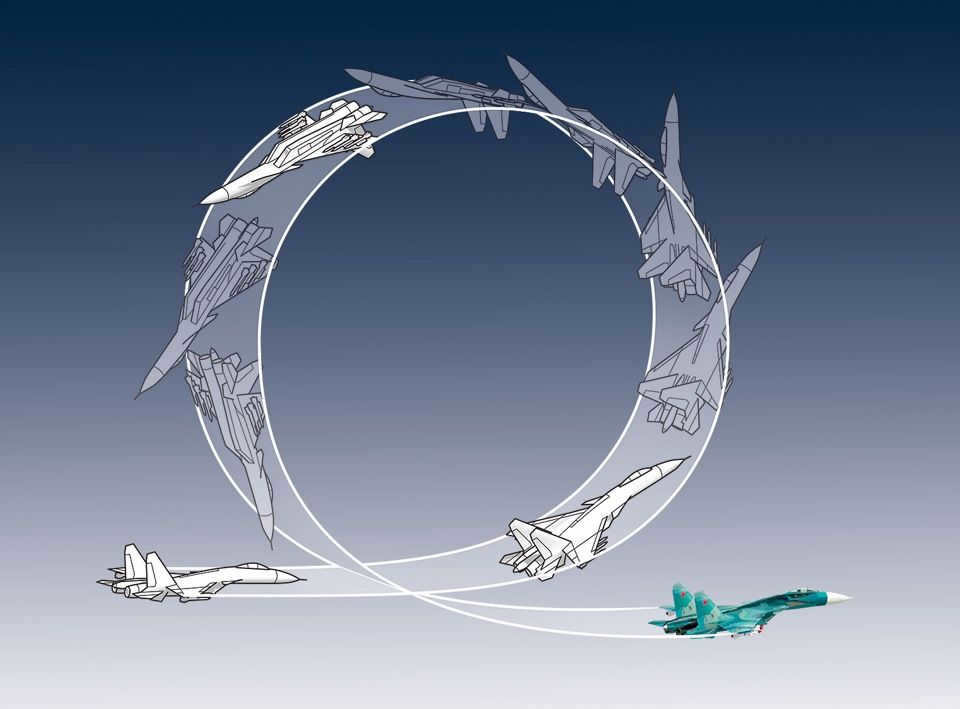
3. The supersonic fighter aircraft pilot experiences loads ranging from -8 to +12 “gi” during tests and when performing maneuvers. It is unrealistic to withstand such loads without extensive and continuous training as well as anti-overload suits.
4. Formula 1 drivers are widely recognized as individuals whose profession is most closely associated with extreme loads. These loads are also unpredictable, can be applied in different directions, and can change direction and magnitude abruptly. The highest recorded survival record at an instantaneous load of 214 units was achieved by pilot Kenny Brack in 2003. To visualize this load, multiply this figure by the average weight of a pilot, which is 75 kg, and we get approximately 16 tons!
Animals hold the record for experiencing extreme overloads
Pilots and astronauts are often considered the toughest individuals in the world. However, there are other creatures that experience even more extreme conditions, and they are not humans, but birds. The Anna’s hummingbird, for example, can perform incredibly fast and sharp turns, dives, and ascents without feeling any discomfort. Ornithologists have calculated that during a tenth of a second, when the bird changes direction, it experiences an overload of 34 g. Additionally, when it hovers sharply, it experiences a negative overload of -10g for 1.5 seconds. For a human, experiencing these levels of overload would be equivalent to death.

Woodpeckers have taken their abilities to the next level. Woodpeckers can strike a tree at an average speed of 20-25 movements per second. If any other bird were to strike a tree at this speed, it would not be able to handle the overload and would die after a few strikes. Measurements have shown that woodpeckers experience overloads of 1000-1200g, which is much higher than what other animals, including humans, can handle.
Strategies for Pilots to Prepare for Overloads
When it comes to enduring substantial and continuous overloads, courageous pilots must employ the following techniques:
– Engage in several hours of daily training using customized programs, with a particular focus on strengthening the neck and back muscles to minimize spinal damage;
– Utilize simulators to consistently practice and enhance their vestibular system.
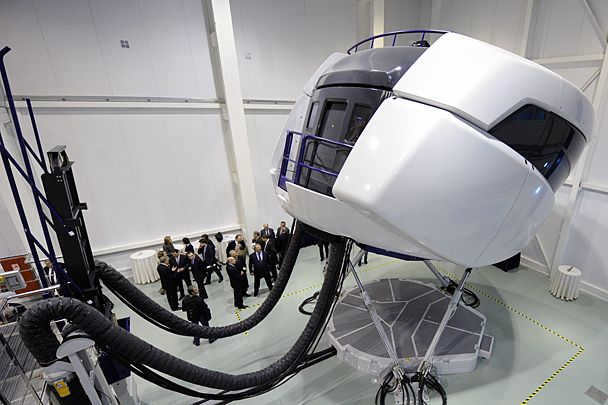
– It is crucial to closely observe your well-being and undergo routine examinations;
– It is crucial to prioritize weight management, preventing any increase as it presents an extra hazard to the heart during periods of heightened stress.
Tips for Preparing for Airplane Passenger Overload
To prevent the negative effects of overload, such as dizziness, headaches, and ear discomfort due to pressure changes, there are some simple guidelines to follow:
1. Prior to the flight, consider taking a blood thinner like aspirin and wearing compression socks to improve blood circulation.
2. During takeoff and landing, try using acidic lollipops or chewing gum to help alleviate any discomfort.
3. Stay hydrated during the flight by drinking plenty of fluids and find ways to distract yourself from the travel process, such as reading a book, magazine, or engaging in conversation. You can also make productive use of your time by working on your laptop.
The flight attendant will provide further instructions and reminders.
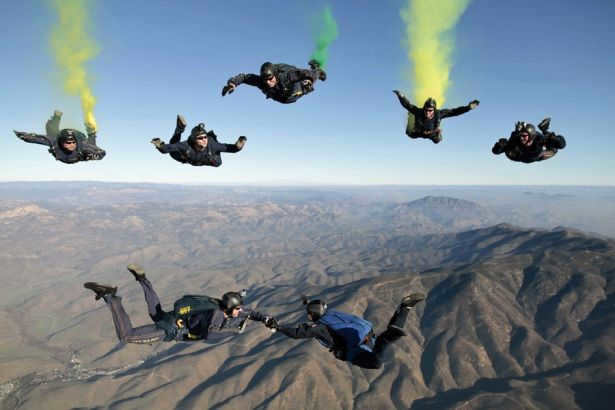
Date of creation: 11.07.2017 20:11:42
The measurement of overload is done in multiples of the body weight experienced in Earth’s gravity. On Earth’s surface, one unit of overload is equal to the body weight. The human body is well-adapted to this level of stress, making it imperceptible to humans.
If an external force applies an acceleration of 5 g to a body, the resulting overload will be 5 times the initial weight. This means that the body weight increases by 5 times under these conditions.
When a regular airliner takes off, passengers in the cabin are subjected to an acceleration of 1.5 g. According to global regulations, civil airplanes are allowed to have a maximum acceleration of 2.5 g.
The body’s response to acceleration depends on its intensity, rate of increase, and the initial condition of the individual. As a result, various symptoms can occur, ranging from minor discomfort (such as a heavy feeling in the body and difficulty moving) to more severe conditions.
Yuri Baturin, the Astronaut: Excessive Load is Comparable to Standing on the Chest
Prior to their space mission, astronauts go through extensive training to prepare for the immense physical stresses they will encounter. What challenges lie ahead for the crew, and what does a 6G overload entail? Pilot-astronaut Yuri Baturin explained this to the television channel “MIR 24”:
– This means that the force exerted on the body is six times greater than its own weight. During training, astronauts are accustomed to experiencing forces of 4G and 8G, so a 6G overload falls within the range of what they are prepared for. This level of load is typically experienced during a ballistic descent. However, there can be even higher loads in other scenarios. In this particular case, the excessive load occurred due to an abnormal situation, namely, the emergency shutdown of the engines. To put it in layman’s terms, it’s like standing on your chest – that’s all.
Do you remember when the “Soyuz MS-10” spacecraft, along with a crew, was launched from the Baikonur Cosmodrome’s first launch pad, also known as the “Gagarin Launch,” at 11:40 Moscow time? Unfortunately, issues arose 119 seconds into the flight when the side blocks of the first stage failed to separate from the central block of the second stage. As a result, the emergency beacon was activated, causing the spacecraft to split into compartments and deploy an emergency parachute. Thankfully, the crew safely landed in the vast Kazakh steppe.
Aviation Overloading

Overload is the ratio of lift [1] to the weight of the aircraft. It is a dimensionless quantity, but it is often expressed in the same units as the acceleration due to gravity, g. An overload of 1 unit (or 1g) indicates level flight, while 0 signifies free fall or weightlessness. When an aircraft executes a turn at a constant altitude with a bank angle of 60 degrees, its structure experiences an overload of 2 units.
The permissible limit for overload on civilian aircraft is 2.5. An average individual can endure an overload of up to 15G for approximately 3-5 seconds without losing consciousness. However, when faced with higher overloads ranging from 20-30G and beyond, a person can only endure for a maximum of 1-2 seconds, depending on the magnitude of the overload. For instance, an overload of 50G would only allow a person to endure for 0.2 seconds. Specially trained pilots wearing anti-overload suits can withstand overloads ranging from -3…-2 to +12 [2]. Notably, resistance to negative and upward overloads is significantly lower. Typically, at 7-8G, the eyes become “red” and the individual may lose consciousness due to the blood rush to the head.
Overload is a vector quantity that is directed in the direction of a change in velocity. It is a fundamental aspect for living organisms. When experiencing overload, human organs tend to remain in their current state, either in uniform rectilinear motion or at rest. In a positive overload scenario (head-foot), blood flows from the head to the feet, while the stomach moves downward. On the other hand, in a negative overload situation, blood flows towards the head, and the stomach may rotate along with its contents. When a moving car collides with a stationary car, the occupant of the stationary car will experience an overload in their back and chest. However, this type of overload is generally tolerable without significant difficulty. During takeoff, astronauts endure overload by lying down. In this position, the vector is directed from the chest to the back, allowing them to endure the overload for a few minutes [source not provided for 370 days]. Astronauts do not rely on anti-overloading devices, but instead use a corset with inflatable hoses that are connected to an air system. These hoses inflate and provide external support to the person’s body, slightly impeding the outflow of blood.
May I pose a foolish inquiry?
The browser you are currently utilizing is Internet Explorer, which is an antiquated and unsupported version. To prevent any difficulties with the presentation of websites or forums, we recommend updating to version 7.0 or a more recent iteration. Alternatively, it would be advantageous to upgrade to Opera or Mozilla Firefox.
Feel free to engage in discussions and pose questions within this thread.
melky
newbie
Can you please explain the concept of overload to me? For instance, I’ve heard people say that a pilot experienced a 3g overload. What exactly does that mean? Is it a significant amount or just a small one? And more importantly, how can one comprehend the impact of overload?
I’m aware that this might sound like a silly question, but I’ve asked several people and still haven’t received a satisfactory answer. I don’t have anyone else to turn to for clarification.
Dynamics
Welcome! Asking questions here has never resulted in anyone having their tongue ripped off.
Overload is a measure that indicates how many times the force acting on an object exceeds the force of gravity. It can be broken down into three components: normal (upward), longitudinal, and lateral. The normal component has a value of 1 when the object is at rest or in uniform rectilinear motion because it is solely due to gravity. The other components have a value of 0. If the overload is 3g (the normal overload is usually implied, especially in aviation where it can be high), it means that a force three times the weight of the object (at rest) is acting on the person. A total overload of zero indicates weightlessness.

